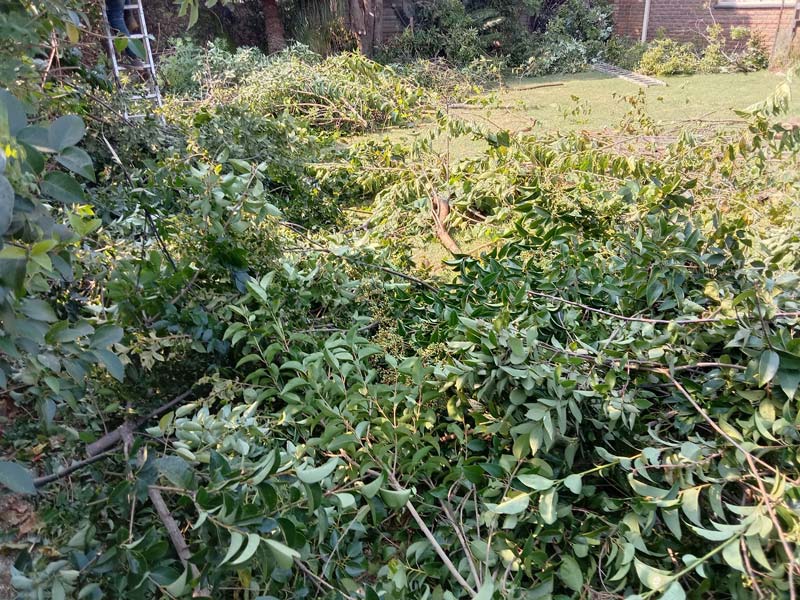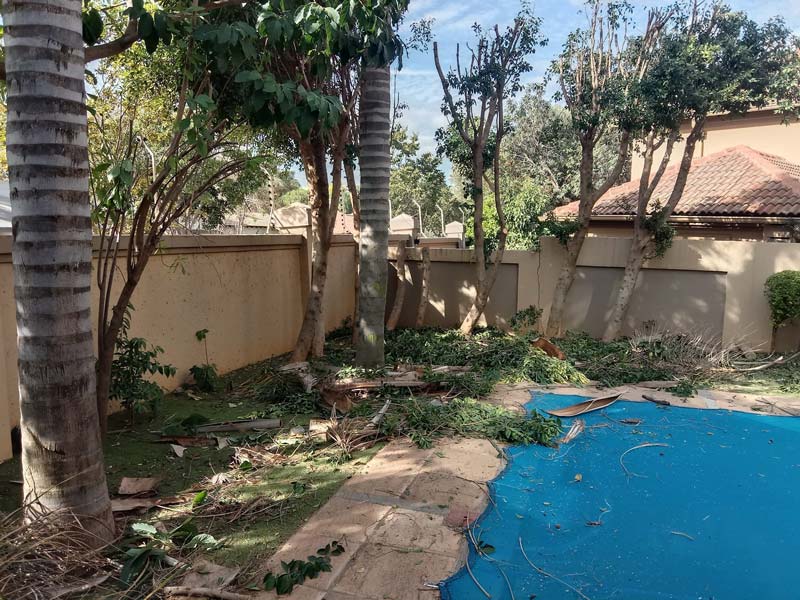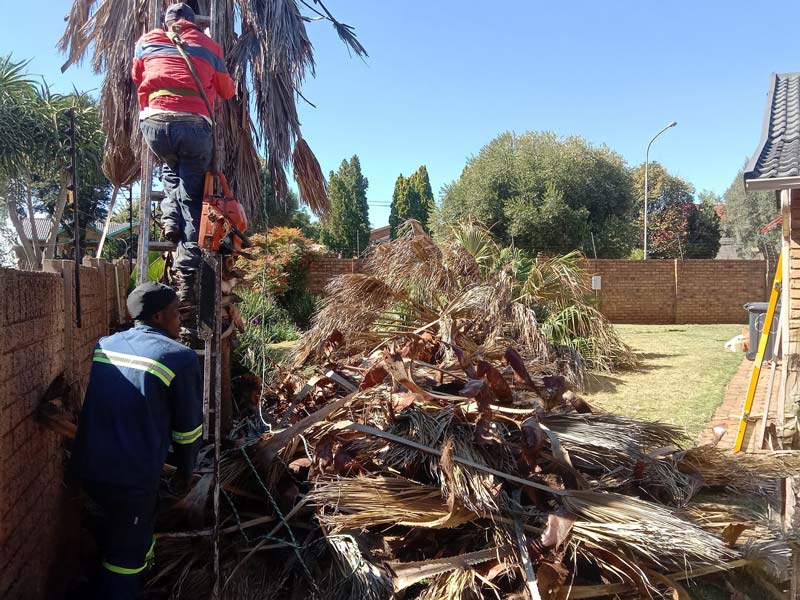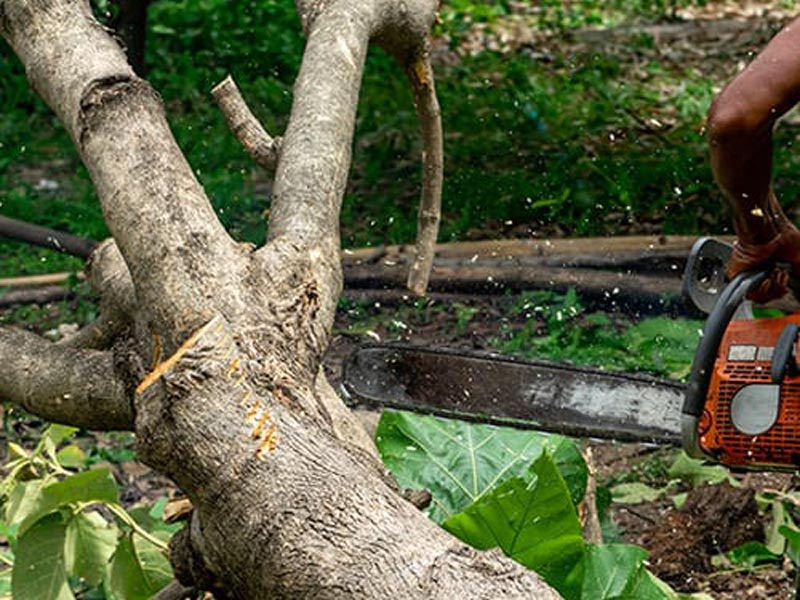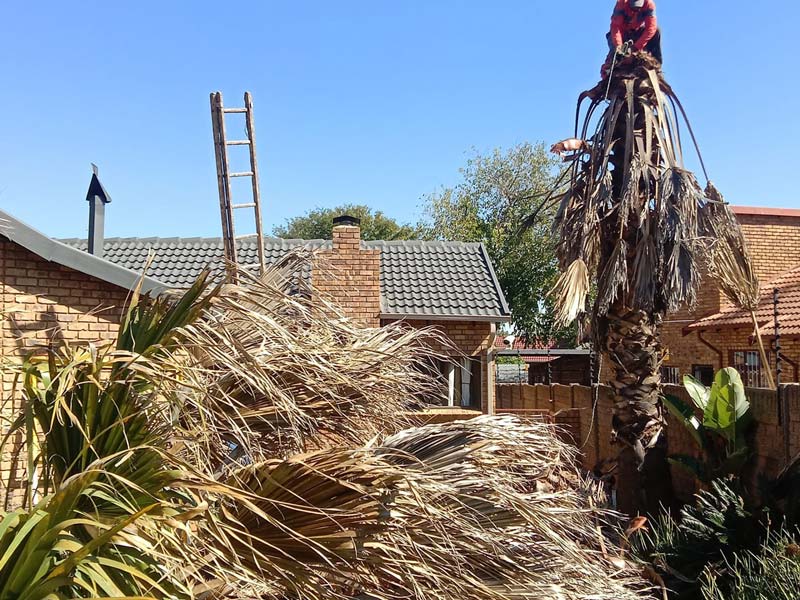Homeowners insurance in Pretoria East typically covers damage caused by storms or falling branches, but may not extend to incidents resulting from DIY tree work. Neglect or improper maintenance can lead to claims being denied. Furthermore, homeowners could face liability if injuries or property damage occur during such projects. Comprehending the limitations of insurance is essential. Investigating professional tree services can help guarantee compliance with insurance requirements and promote safety during any tree-related activities.
Understanding Homeowners Insurance Coverage for Tree Damage
When considering homeowners insurance coverage for tree damage, it is crucial to grasp the specific circumstances under which a policy provides protection.
Typically, homeowners insurance covers damage caused by perils like storms or falling branches, especially if a tree strikes a home or detached structure. However, neglect due to maintenance issues, such as rotting wood, often falls outside coverage limits. Damage from storms is generally covered, which highlights the importance of understanding what incidents your policy protects against. It’s also important to recognise that debris removal is generally covered only if it damages a structure or blocks critical access points.
Homeowners should consult their insurance agent to clarify coverage limits and ascertain they are adequately protected.
Risks of DIY Tree Work and Insurance Implications
Engaging in DIY tree work can seem like a cost-saving measure, yet it carries significant risks that often outweigh potential benefits. The implications for insurance coverage in such scenarios can be severe.
- Personal injury risks from falls and cuts.
- Increased chance of property damage to buildings and utilities.
- Potential electrocution hazards near overhead cables.
- Unpredictable environmental factors complicate tree behaviour. Professional tree felling services employ safe dismantling techniques to minimise these risks.
- Liability claims resulting from third-party damage.
Additionally, improper tree felling can increase liability risks, as it often leads to unpredictable outcomes during the cutting process. DIY tree work can lead to costly medical bills and repair expenses, often leaving homeowners vulnerable due to possible exclusions in their insurance policy for unauthorised activities.
Choosing professional services is essential for peace of mind.
Importance of Professional Tree Services for Insurance Compliance
The significance of hiring professional tree services lies in their ability to guarantee compliance with insurance requirements and minimise risk. Insurers often mandate that tree work be performed by licensed and insured professionals, as this helps protect homeowners from potential liability issues. Additionally, professional services are equipped to handle emergency tree removal effectively, ensuring safety and adherence to legal standards.
Coverage Verification Necessity
Grasping the importance of verifying insurance coverage is essential for homeowners considering DIY tree work. Without proper verification, homeowners may face unwanted financial repercussions following accidents or damages. Ensuring compliance with insurance regulations can prevent disputes and denied claims.
- Confirm personal policy coverage for DIY projects.
- Understand exclusions related to unlicensed work.
- Hire insured professionals to protect against liabilities.
- Request a Certificate of Insurance from contractors.
- Prioritize companies with general liability and workers’ compensation insurance.
Being informed about insurance ensures peace of mind and compliance, making any tree work safer for both property and occupants.
Risk Mitigation Strategies
Understanding the importance of risk mitigation strategies in tree care is vital for homeowners considering whether to tackle tree work independently or hire professionals. Engaging certified tree services greatly reduces the risks associated with tree removal and maintenance. Such professionals guarantee compliance with safety regulations and maintain liability insurance, protecting homeowners from potential claims. Additionally, employing experts from a professional tree felling company ensures that the job is completed safely and efficiently.
| Risk Mitigation Strategies | Benefits to Homeowners | Consequences of DIY |
|---|---|---|
| Trained arborists | Reduced risk of injury | Increased chances of accidents |
| Professional-grade equipment | Minimises damage to property | Potential for extensive repairs |
| Extensive risk assessments | Identification of hazards | Overlooked risks leading to claims |
Compliance With Insurance Requirements
Ensuring compliance with insurance requirements is paramount when considering tree work, particularly for homeowners who might contemplate performing this task themselves. Engaging professional tree services can substantially mitigate risks associated with DIY work.
- Homeowner policies may exclude liability for unlicensed work.
- Professional services typically maintain comprehensive insurance.
- Proper licensing guarantees adherence to safety standards.
- Coverage verification protects homeowners against unforeseen damages.
- Hiring licensed arborists simplifies potential insurance claims.
Choosing qualified professionals like Pretoria East Tree Felling not only ensures compliance but also enhances safety, providing peace of mind and financial protection throughout the tree service process.
Differences in Coverage Between DIY and Professional Tree Maintenance
When evaluating the differences in insurance coverage between DIY tree maintenance and professional services, it is crucial to recognise that homeowner policies often fall short in protecting individuals who attempt tree work themselves.
Generally, damages resulting from DIY efforts are seldom covered, leaving homeowners liable for costs. In contrast, professional services typically include liability coverage that protects against accidents and property damage.
Moreover, professionals follow safety protocols, lowering risks of injuries. Homeowners may also face penalties for lacking permits during DIY work. Additionally, professionals use sectional cutting techniques to ensure safe and controlled tree removal, further mitigating potential hazards.
Ultimately, investing in professional tree maintenance not only guarantees safety but also offers essential insurance protection.
Liability Considerations for Large Tree Removal Projects
Large tree removal projects come with significant liability considerations that property owners must address.
Comprehending the essentials of insurance coverage is vital, as the risks associated with these tasks can lead to costly damages or injuries. Engaging professional services not only guarantees adherence to safety practices but also provides the necessary protection against potential liabilities. Additionally, professional services ensure that safety perimeters are implemented during operations, minimising risks to both workers and property.
Insurance Coverage Essentials
In the domain of tree removal, careful consideration of insurance coverage is vital for mitigating risks associated with large tree removal projects.
Adequate insurance safeguards against various liabilities, protecting both the tree removal team and clients.
- Covers injuries to third parties and property damage
- Typically requires limits of £1 million per occurrence
- Equipment and trailer coverage protects costly tools
- Workers’ compensation is essential for employee safety
- Surety bonds improve contractor credibility and protect clients
Understanding these coverage essentials helps guarantee a safe, responsible approach, ultimately promoting trust between service providers and customers in Pretoria East. Additionally, awareness of controlled lowering techniques can further reduce liability risks during tree removal operations.
Risks of DIY Removal
Engaging in DIY tree removal presents numerous risks that can have significant implications for both homeowners and their properties.
The use of chainsaws without professional training often leads to severe injuries, including cuts and amputations. Furthermore, instability of ladders can result in falls, causing serious harm.
Improper tree felling techniques may damage homes or neighbouring properties, leading to costly repairs. Homeowners may face legal repercussions for not obtaining necessary permits, which can increase liability exposure.
Finally, environmental risks due to inadequately assessed tree conditions can pose unexpected challenges. Consequently, the stakes involved in DIY tree removal warrant careful consideration. Additionally, controlled reduction techniques can help ensure safer and more effective tree management when performed by professionals.
Professional Service Advantages
Utilising a professional tree removal service provides numerous advantages, particularly concerning liability in large-scale projects. Homeowners can benefit greatly from hiring insured experts, reducing their exposure to risks associated with tree work.
- Fully insured services protect homeowners from liability.
- Experienced crews use specialised equipment, minimising mishaps.
- Formal risk assessments guarantee safety compliance.
- Adherence to local regulations mitigates insurance complications.
- Professional standards prevent potential environmental damage.
Incorporating these services promotes peace of mind, knowing that trained professionals are managing the removal safely and efficiently, guaranteeing both property protection and compliance with necessary permits. Moreover, professionals can implement tree shaping essentials that enhance the structural integrity of trees during the removal process.
Steps to Take After a DIY Tree Work Incident for Claims
What steps should be taken following a DIY tree work incident to facilitate a successful insurance claim? Clear documentation is essential. First, record the date and time and gather photographic evidence of the incident. Next, review the insurance policy to determine coverage specifics, including any relevant exclusions. Notify your insurance provider as soon as possible and submit all necessary documentation. Finally, consider obtaining an expert assessment for credibility.
| Step | Action Required | Purpose |
|---|---|---|
| Incident Documentation | Record details and capture evidence | Establish claim validity |
| Insurance Policy Review | Verify coverage specifics | Ensure proper claims process |
| Claim Notification Process | Notify insurer promptly, submit evidence | Avoid claim denial |


